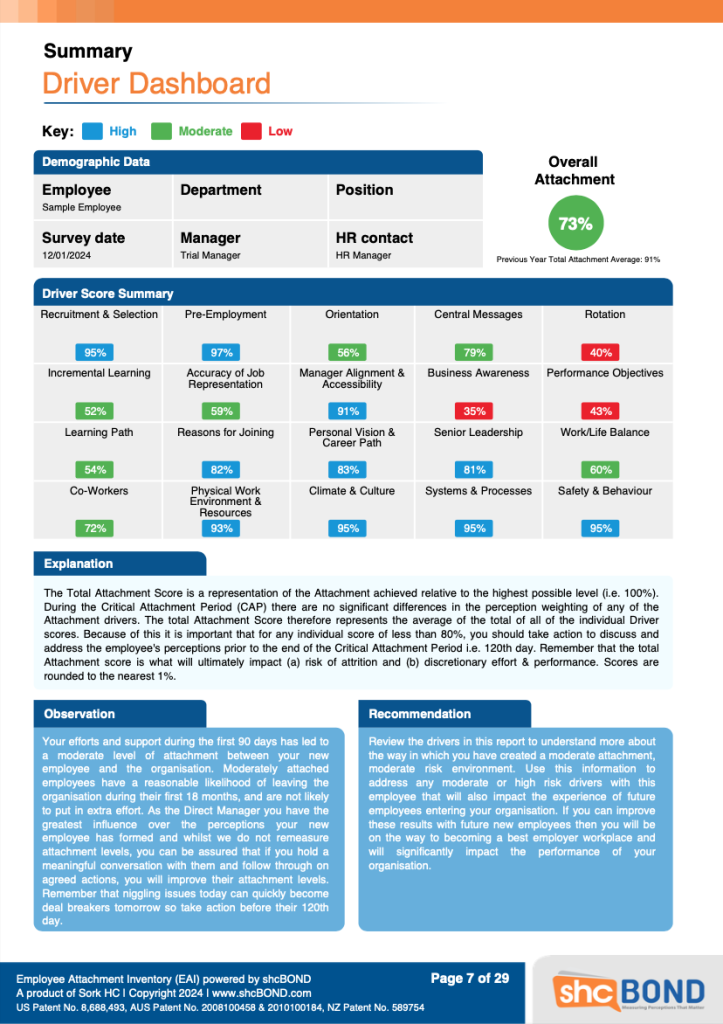
EMPLOYEE ATTACHMENT INVENTORY (EAI)
The EAI is a patented survey-based instrument administered at the 90th day of employment. Designed for measurement, intervention and strengthening Attachment. The EAI measures the emotional bond formed between your new employee and your organisation based on the four core Attachment perceptions of:
- Security
- Trust & Value
- Acceptance
- Belonging
Attachment is formed during the Critical Attachment Period (the first 120 days) impacting the risk of attrition, discretionary effort, and performance of your new talent within the first 12-18 months.
The Process

Key Benefits of the EAI:
- Reduces the risk of early attrition
- Supports open, honest and trust-based communication between the line manager and new employee
- Increases discretionary effort, contribution and performance of new employees
-
Provides powerful trend reporting data and analysis
The 20 Drivers of Attachment
The EAI measures 20 drivers of Attachment and consists of a Survey and Consultative Feedback Report.
1. Recruitment & Selection
2. Pre-Employment
3. Orientation
4. Central Messages
5. Rotation
6. Incremental Learning
7. Accuracy of Job Representation
8. Manager Alignment & Accessibility
9. Business Awareness
10. Performance Objectives
11. Learning Path
12. Reasons for Joining
13. Personal Vision & Career Path
14. Senior Leadership
15. Work/Life Balance
16. Co-Workers
17. Physical Work Environment & Resources
18. Culture & Climate
19. Systems & Processes
20. Safety & Behaviour

Download our Sample EAI Feedback Report
The EAI Feedback Report and Action Plan
The EAI Feedback Report is a consultative report designed for the line manager to gain insights about their new employees on-boarding experience that promotes a two-way discussion with their new employee with a focus on specific drivers that are moderate or low in Attachment.
The EAI Feedback Report includes an Overall Attachment Score, individual Driver scores across the 20 Attachment Drivers that are measured, Observations, Recommendations and suggested Driver specific questions for the line manager to explore with their new employee during their one-on-one meeting.
The line manager and new employee will collectively work on an Action Plan during this meeting to address the gaps the new employee has identified during their on-boarding phase (the first 90 days) and before the end of the Critical Attachment Period (120 days) thereby reducing the risk of attrition and increasing the performance of their new talent.
